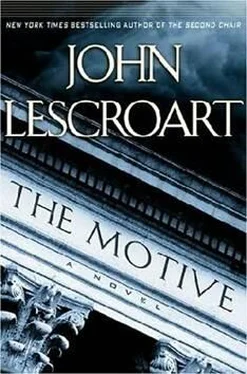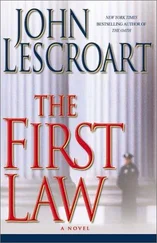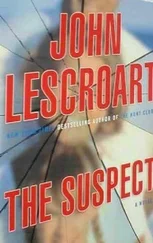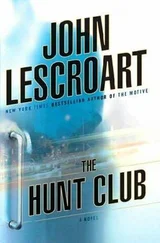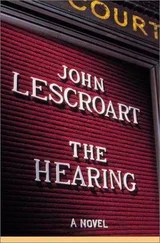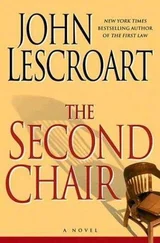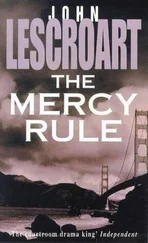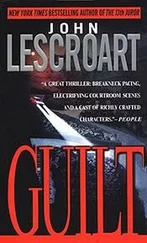
John Lescroart
The Motive
The ninth book in the Dismas Hardy series, 2004
To Lisa Sawyer Again, and again, and again…
Out of the crooked tree of humanity no straight thing can ever be made.
– Immanuel Kant
By location alone, a block from Fillmore Street as it passes through the upwardly challenged Hayes Valley, Alamo Square would not be among the sexier neighborhoods in San Francisco. But one of the most popular and recognizable posters of the City by the Bay captures a row of beautifully restored and vibrantly painted three-and four-story Victorians that face the park on Steiner Street-the so-called "Painted Ladies." The poster created a certain cachet for the area such that the cheapest of these houses now go for three-plus. Million.
The blaze at Paul Hanover's, in the middle of this block, began around 8:00 p.m. on May 12, although the first alarm wasn't called in until nearly 8:30. Fires love old Victorians. Even though Hanover's house had been stripped to the bare bones twenty years earlier- retrofitted for earthquakes and freshly insulated with fire-resistant material-it is the nature of Victorian design to have funky interior spaces, oddly shaped rooms, crannies and closets and unusual passages. Within the walls, since heat wants to travel up, fires employ the vertical stud lines as flues, almost as chimneys, to transport themselves effortlessly and quickly up and up into the roof spaces, where billowing smoke is most often noticed first.
Even in a neighborhood of great sensitivity to the threat of fire-of old, very valuable wooden houses in wall-to-wall proximity-no one noticed anything amiss at Hanover's until the fire had progressed to the unfinished attic. The late-arriving fog camouflaged the first appearance of the smoke, and the wind blew it away. By the time one of the local residents realized that what he was actually seeing was not fog but thick clouds of smoke pouring out from under the eaves of his neighbor's roof, the fire was well advanced.
As soon as the first alarm's fire trucks arrived-three engines, two trucks, two battalion chiefs, an assistant chief and a rescue squad-the two-man aerial ladder team from the first engine began climbing to Hanover's roof, intending to ventilate it by cutting a hole into it with axes and chainsaws. Meanwhile, four men in Nomex turnout pants and coats and wearing Scott Air-Paks-the initial attack squad-got to the front door, found it unlocked and opened it right up. Although they were armed with Akron fog nozzles that could spray water over a wide angle and get them closer to the flames, in this case they were greeted by a roiling cloud of hot thick black smoke, impossible to see through. They could make no progress.
Al Daly, officer of the initial attack squad, spoke matter-of-factly into the headpiece of his walkie-talkie. "Front door is breached, Norm. We got a working fire here." Daly was speaking to his battalion chief, Norm Shaklee, out front in the street. The words conveyed great urgency. A working fire meant they would need at least one more alarm-four more engines, another truck, two more chiefs. In a house this size with so much exposure to the homes on either side, this working fire could go to five alarms, San Francisco's maximum.
All four stories of Hanover's home might already be- probably were-involved. Shaklee, in his white helmet, placed the next alarm call and looked up as the sound of chainsaws stopped. Over the roof, he saw a churning pillar of black smoke erupt into the sky, and spoke into his walkie-talkie. "They're through on the roof, Al. Back out a minute."
He was telling Daly that ventilation was about to start working, potentially a very dangerous moment. If the smoke inside the house was hot enough-and no one knew if it was-the addition of oxygen to it might at this time cause a tremendous and often lethal backdraft explosion. So the initial attack squad waited in a kind of suspension down the front steps out in the street until, a minute and forty seconds later, the smoke column spewing from the roof suddenly exploded into a fireball that lit the night for blocks around and rose to heights of a hundred feet and more.
By now, the first hoses had been attached to the hydrant at the corner, and eight firefighters on each of a couple of them were blasting six hundred gallons of water per minute into the open space. For all the apparent good the firefighters were doing, they might as well have been standing around spitting on the flames, but appearances in this case were deceiving. The hydrant water was lowering the temperature sufficiently so that Daly and his squad could advance again into the building.
Because of the ventilation, the smoke that filled the foyer had now begun to dissipate upward, as did the thick cloud of steam generated by the water from the hoses. Within a few seconds after the hose teams stopped soaking the entryway, Daly and his squad were back at the front door. With his night helmet's beam on and glowing, he had relatively clear sight lines through the foyer to the house beyond, to the flames still licking at the walls on all sides. Wielding his Akron, spraying in a wide arc, he advanced into the darkness, following the beam on his helmet. All around was noise and chaos-the rush of air behind him as the conflagration sucked it in, the roar of the actual fire, the creaking and splintering of wood, the hail of ax blows, disembodied voices yelling both within and outside the building.
Daly sprayed and advanced, sprayed and advanced. One foot or so at a time. The foyer was circular, high-ceilinged and quite large, perhaps fourteen feet in diameter. He could make out the shapes of burning furniture along the walls-what appeared to have been a coatrack, a sideboard, maybe an umbrella stand or wastebasket. Drapes over a pair of windows, curved to the shape of the house, were all but incinerated. One opening to Daly's right led into another open room, and directly ahead of him another doorway fed into a hall. Everywhere he looked there was flame-total involvement of the ground floor.
Despite the hose's soaking, the fire was growing again, heating up. It was excruciatingly hot, dangerously hot. Daly felt a sloshing like water in his ear, but knew that it wasn't water. It was his earwax, melting. He had to get out of here, right now. He wasn't going to be able to check for potential rescue victims until the fire died somewhat, and by then-by now, he knew-anything living in the structure would have died as well.
Still he pushed forward, forcing himself for another step or two, spraying as he went. It was full night, his only light his helmet beam. Looking down at the entrance to the hallway, he suddenly became aware of two shapes that stopped him where he stood. Leaning in for a closer look, not that he needed it, he forced himself to speak in his most neutral tone. "There's two bodies in here, Norm. In the foyer."
Out in the street, the second-alarm units had begun to arrive and Shaklee was issuing orders to nine people at once back by the rehab station, which itself was already nearly overwhelmed supplying drinks, fresh air bottles and first aid. He asked Daly to repeat what he'd just said, and he did, adding, "No ambulance needed." Which meant they were obviously dead.
Shaklee took only another second to process the information, then turned and spoke to his operator-aide, who functioned as gopher in the field. "Find Becker," he said, "and put in a call to homicide."
Arnie Becker, the forty-three-year-old lead arson investigator attached to the Bureau of Fire Investigation, arrived with the second-alarm unit. In situations like this, Becker's task was to determine the origin of the blaze. To do that, he'd have to enter the building and investigate all the indicators-"V" patterns on walls, decalcification of Sheetrock, "alligatoring" of studs, condition of electrical components and so on-and by doing so, hope to locate the spot where the fire began, and if possible determine what might have caused it.
Читать дальше
